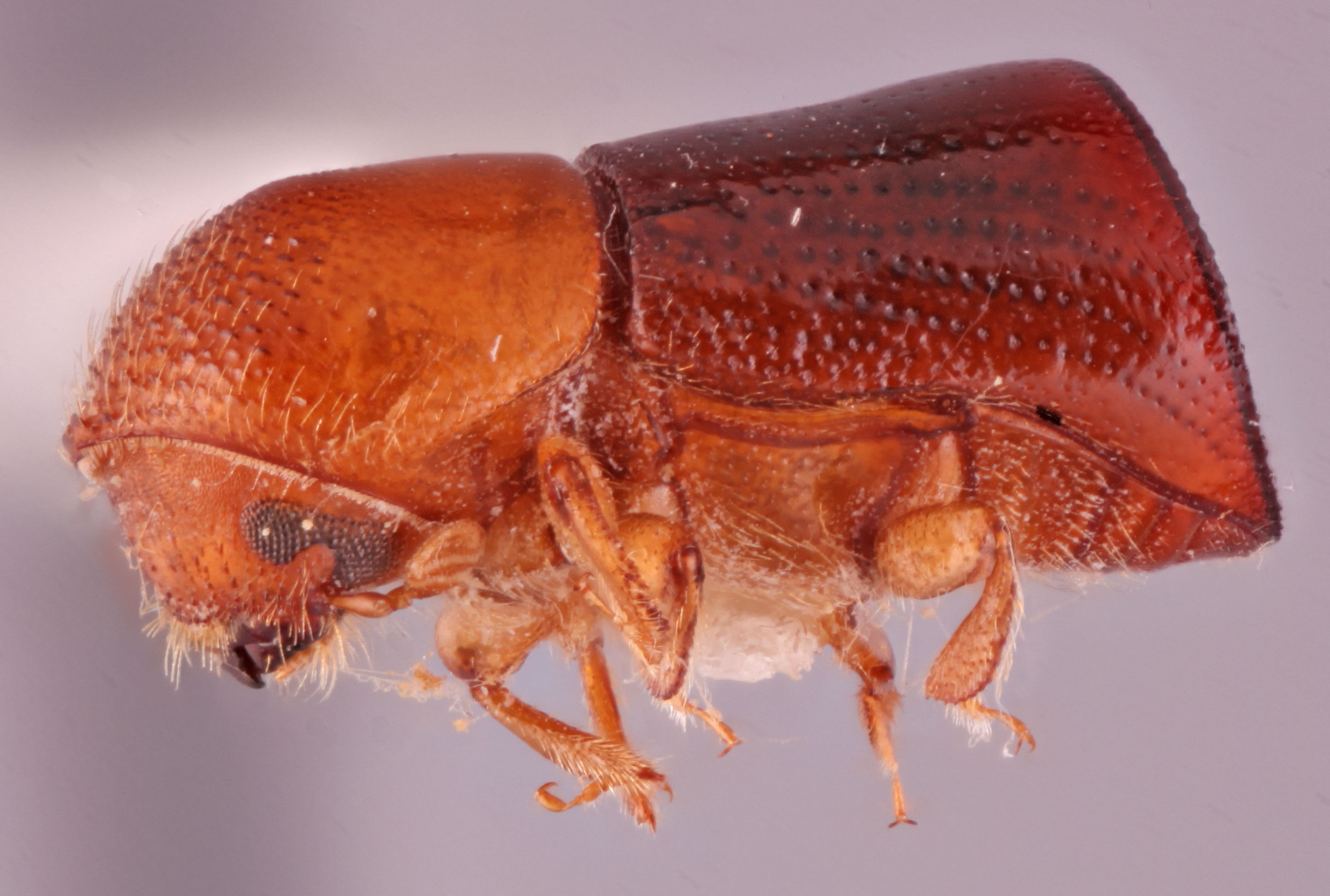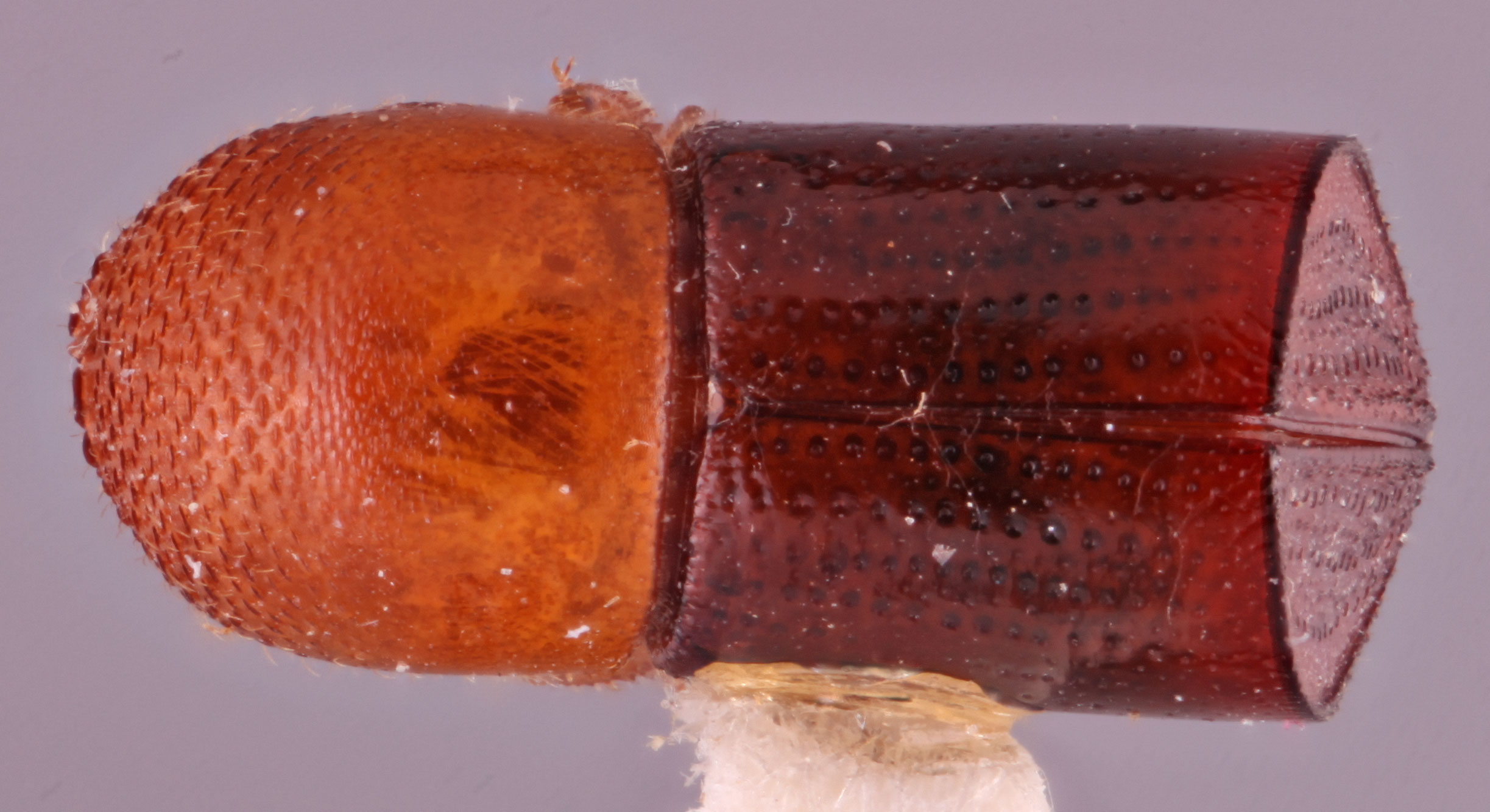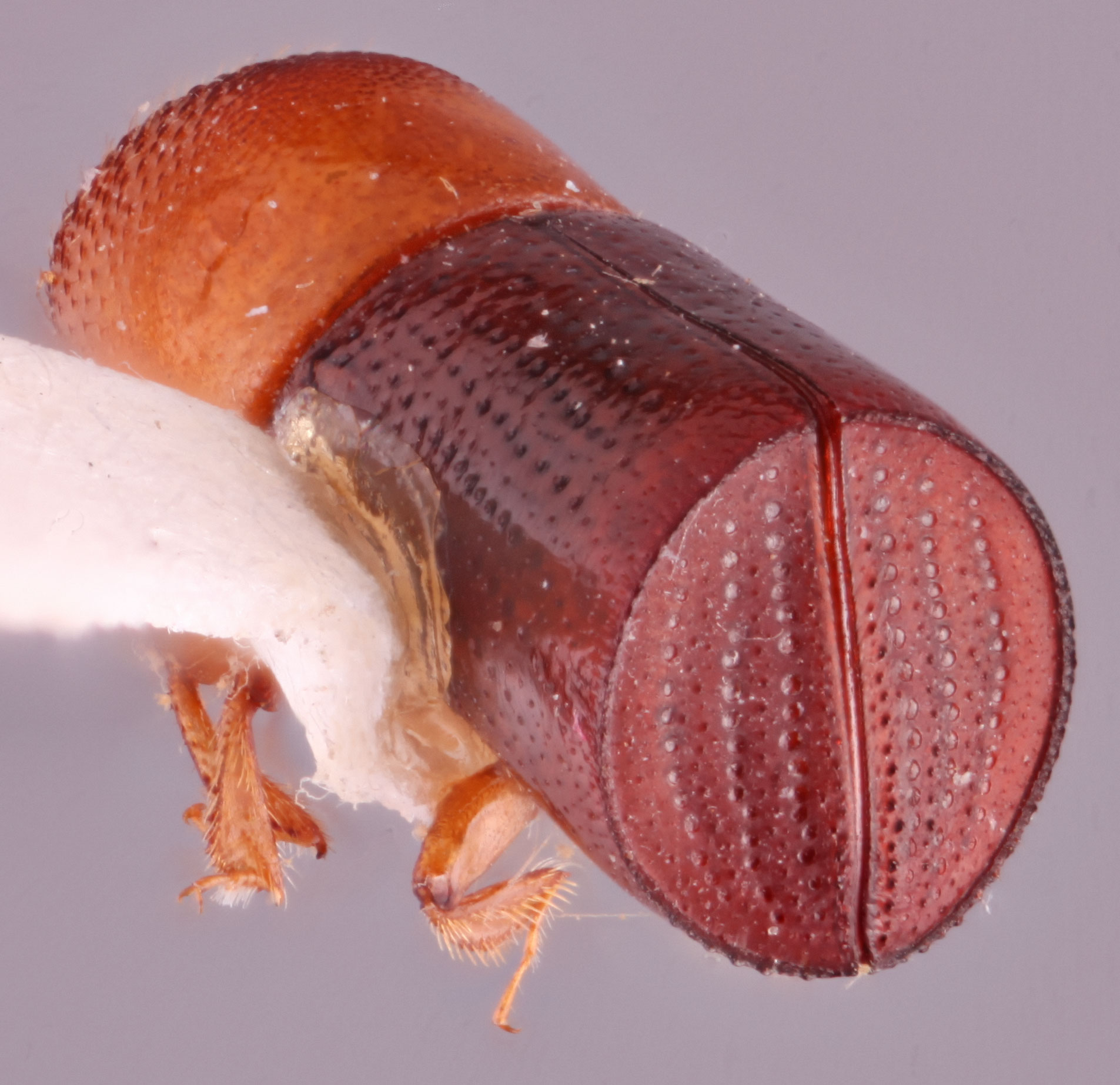Amasa resecta
|
Amasa resecta lateral; S.M. Smith |
|
Amasa resecta dorsal; S.M. Smith |
|
Amasa resecta declivity; S.M. Smith |
|
Amasa resecta frontal; S.M. Smith |
Taxonomic history
Xyleborus resectus Eggers, 1927a: 391, new name for X. abruptus Eggers, 1923 nec Sampson 1914Sampson 1914:
Sampson FW. 1914. No. XVIII. mdash; Coleoptera; Platypodidae and Ipidae from the Seychelles Islands. Transactions of the Linnean Society of London, Zoology, Second Series 16: 379-391. http://dx.doi.org/10.1111/j.1096-3642.1913.tb00155.x.
Amasa resectus [sic] (Eggers): Wood and Bright, 1992: 684.
Synonyms
Xyleborus abruptus Eggers, 1923: 169.
Xyleborus opacicauda Eggers, 1940: 136. Kalshoven 1959b: 159.
Diagnosis
2.85−3.2 mm long (mean = 2.94 mm; n = 4); 2.29−2.38 times as long as wide. The species can be distinguished by the pronotumpronotum:
the dorsal surface of the thorax
appearing basic (type 2) when viewed dorsally, anterioranterior:
the front or forward; opposite of posterior margin serrate; elytralelytral:
margin serrate; elytralelytral:
pertaining to the elytra
declivitaldeclivital:
pertaining to the elytral declivity
surface shagreenedshagreened:
covered with a closely-set roughness, like shark skin 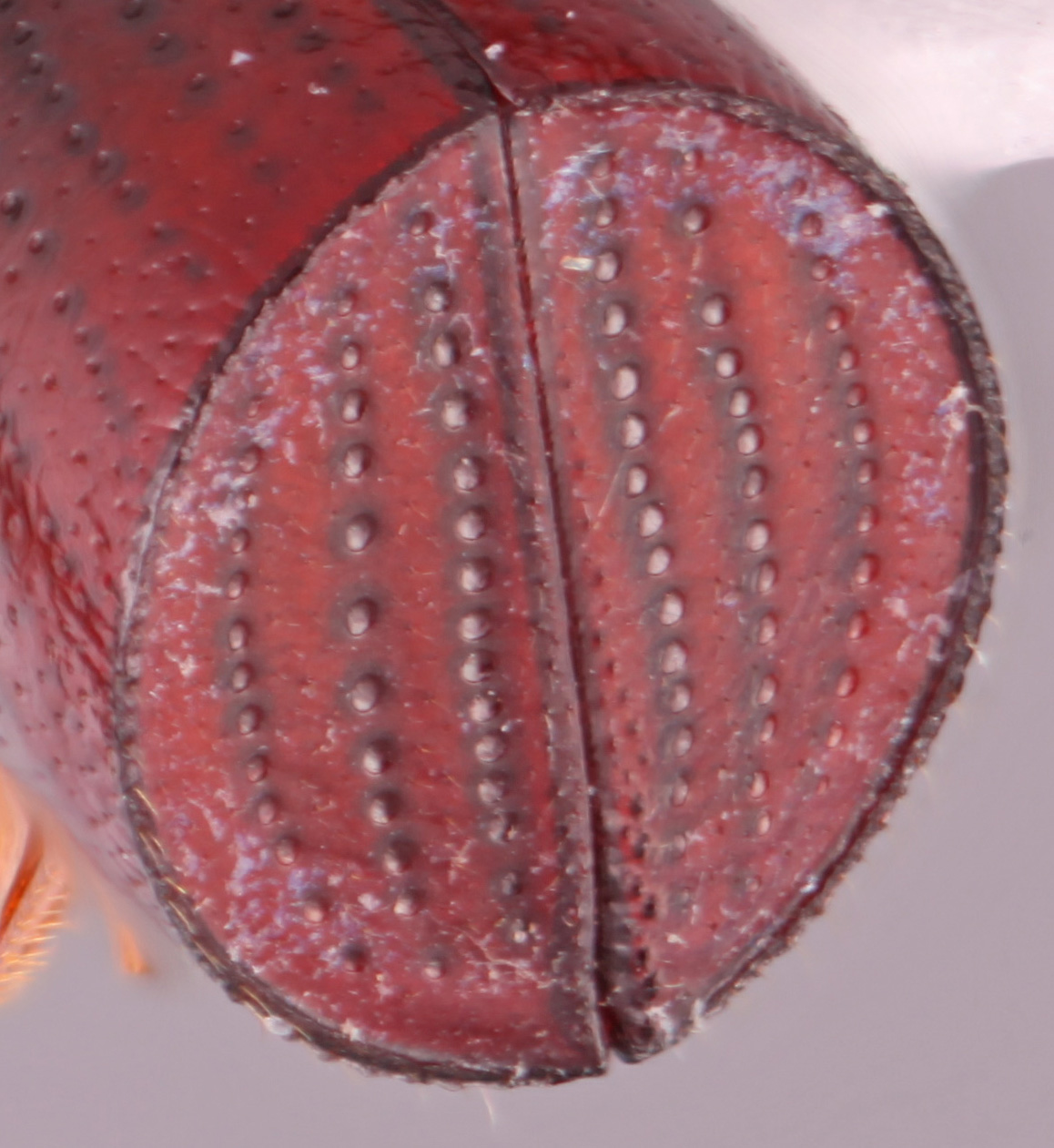 , dull, opaqueopaque:
, dull, opaqueopaque:
appearing dull in luster; referring to a surface which reflects little light
 ; declivitydeclivity:
; declivitydeclivity:
downward slope of either the pronotum or elytra
 glabrous; declivitaldeclivital:
glabrous; declivitaldeclivital:
pertaining to the elytral declivity
interstriae 1−3 multiseriate granulategranulate:
pertaining to a coarse, grainy surface texture
 , granulesgranule:
, granulesgranule:
a small rounded protuberance, like grains of sand
 strongly confusedconfused:
strongly confusedconfused:
of markings, having indefinite outlines or running together as lines or spots without definite pattern; usually referring to punctures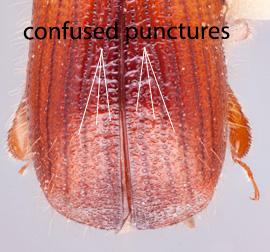 ; and declivitaldeclivital:
; and declivitaldeclivital:
pertaining to the elytral declivity
interstriae 2−4 flat.
May be confused with
Amasa cycloxyster, A. galeoderma, A. schlichii, A. versicolor, and A. youlii
Distribution
Indonesia (Java, Sumatra), East Malaysia, New Guinea, Sri Lanka, Thailand
Host plants
Recorded by Kalshoven (1959b) from five genera in five different families. Evidently polyphagous.
DNA data
specimens not available for sequencing

